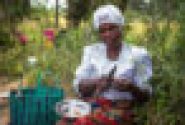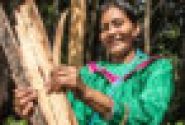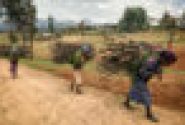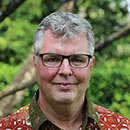The political talks towards new global goals are on. The Rio+20 congregation came up with the idea to agree on Sustainable Development Goals (SDGs) that would set the stage for action under the post-2015 development agenda and supposedly define “The future we want” as stipulated in the Rio+20 outcome document.
Meeting calendars and travel schedules now converge to propel the SDG process. For those involved in UN-led development work, this process may appear to be a way to the future we want. As Ross Coggins wrote in his 1976 poem The Development Set: “Our thoughts are deep and our vision global.” New wisdom will no doubt emerge and be shared with everyone that keeps a Twitter account.
But experience also tells us that political aspiration processes may not necessarily lead to clarity. Our current set of global development indicators come out of the Millennium Development Goals (MDGs). In total, sixty indicators on very important topics have been identified, ranging from infant mortality rate, to CO2 emissions, to condom use during high-risk sex. Forests are in there too, with the indicator “proportion of land area covered by forests”.
While MDG indicator reports have made us more aware and better informed about development issues, it remains difficult to deduce from this complex set what we mean by progress, and more importantly how we measure such progress.
I argue for keeping it simple. If we want sustainability to be broadly understood and desired, we should avoid complexity. And note that complexity does not necessarily mean sophisticated. It can also mean the excessive use of details. Some say that the devil is in the details, but perhaps it is the other way around: the details are the devil.
In other words, we need ways to describe sustainable development wherever we are, and at different scales. And it needs to be easy to understand and affordable to measure. Not least for those investing in businesses that need to be both profitable and sustainable.
Sustainable development has three dimensions – economic, social and environmental. The Rio+20 process did a good job of reconfirming the concept, which dates back to the Brundtland Commission in 1987 and the 1972 Stockholm Conference on the Human Environment.
So, why not go back to this agreed base? It seems to me that four measures could be enough to say if we are going in the sustainability direction:
1. The economic dimension of sustainable development will always have to do with a steady growth of income. Economists will argue which type of income would be appropriate to use, but the measure would be made in monetary terms, i.e. Δ$.
2. The social dimension has to do with a very wide range of issues from rights to health to education. A general measure could, however, be about how the priorities and actions in these areas are determined. In that sense, a steady increase of the number of people involved in decision-making could be a useful measure, i.e. Δn.
The environmental dimension is even more complex, so I suggest two general measures that will tell us about direct impact on the environment and also about resilience of nature and humanity.
3. First, a steady recovery of biomass in landscapes could have several positive impacts, i.e. ΔtC (tonnes of Carbon).
4. Secondly, a steadily reduced use of fossil fuels by produced output will be desirable, i.e. ΔJ/$ (Joule/USD, or energy efficiency).
If all four of these measures show long-term positive trends, or are maintained at satisfactory levels, then I believe we can safely say that we have sustainable development:
SD = Δ$ + Δn + ΔtC – ΔJ/$
Of course, believing is not enough. I look forward to a scientific evidence base that informs us how sustainable development can be effectively measured.
In the meantime, it will be interesting to follow the formal process of establishing SDGs.
We want you to share Forests News content, which is licensed under Creative Commons Attribution-NonCommercial-ShareAlike 4.0 International (CC BY-NC-SA 4.0). This means you are free to redistribute our material for non-commercial purposes. All we ask is that you give Forests News appropriate credit and link to the original Forests News content, indicate if changes were made, and distribute your contributions under the same Creative Commons license. You must notify Forests News if you repost, reprint or reuse our materials by contacting forestsnews@cifor-icraf.org.













